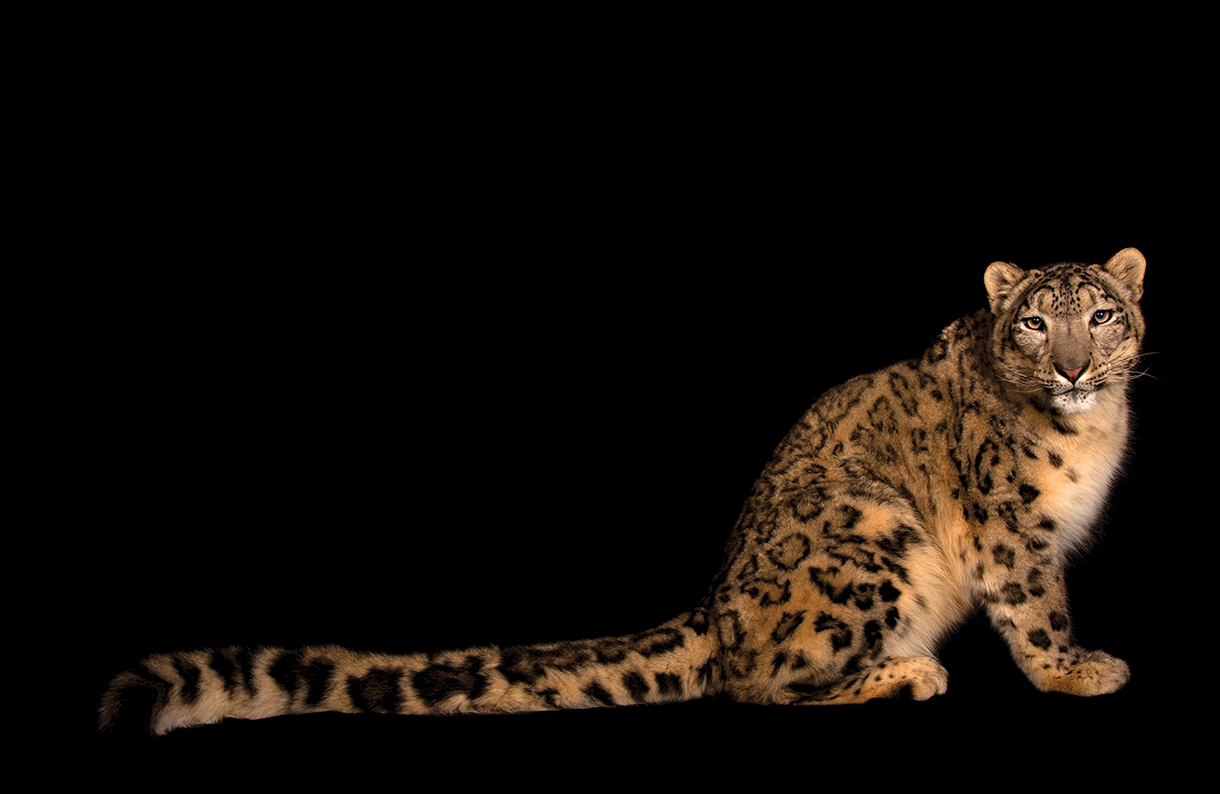
Save the Species, Save the World
A recent UN report predicts unprecedented rates of animal extinctions and the outcome is entirely dependent on human behavior.
In 2019, the Australian Koala Foundation declared koalas functionally extinct. Sad social media memes multiplied. Panic ensued. And then, a most important parsing of words. Not yet gone entirely the way of the dodo or the mammoth, koalas live on. Quite different than actually extinct, functionally extinct means that scientists believe the population has grown too small to produce future generations. In the case of koalas, even this claim is being debated, as conflicting conclusions were drawn in the wake of last year’s devastating fires in Australia.
There is much to be learned from that moment of regret rendered at the thought that koalas were in fact, really, gone. And yet the experience is likely to become more frequent. Last year the conclusions of 455 experts forecasted an unprecedented species extinction rate. The alarm was poignant and potent—a call to action that reverberated worldwide as the United Nations released a landmark report. The cryptic conclusion was that “1 million of Earth’s 8 million species are threatened by extinction because of humans.”
Rebecca Shaw, World Wildlife Fund chief scientist and senior vice president, links the loss of animal species to our fate. “Healthy functioning ecosystems provide clean air, water, and raw materials, but we’re utilizing these at an unsustainable rate. It’s clear that if we don’t do something soon with the degradation of nature, including loss of species, we will struggle to survive.”
There are more than 105,700 species on the IUCN Red List of Threatened Species, the world’s most comprehensive inventory of biological species. Koalas are listed as vulnerable, which is three categories away from being classified as extinct (endangered, then critically endangered, then extinct in the wild are the three categories in between). The list cites more than 28,000 species threatened with extinction (40 percent of amphibians, 33 percent of reef corals, 25 percent of mammals, and 14 percent of birds). In the United States, the Endangered Species Act of 1973 is used as a tool for establishing species viability and recovery efforts. For most threatened species, it’s not too late; following is the latest intel on eight beloved populations on the IUCN and/or EPA lists.
SNOW LEOPARDS
Status: Vulnerable (IUCN)
As the flagship species of high-mountain ecosystems, snow leopards are at a critical juncture.
In the highest mountains of South and Central Asia, snow leopards prowl, feed, and live mostly alone, existing as fleeting apparitions and creatures of local myths and legends. Rarely seen and difficult to spot due to thick fur camouflaged to mimic their rocky habitat, the species has low densities (estimated at less than one adult per 39 square miles) compared to other big cats. Their exact numbers are unknown, ranging from as few as 3,920 to no more than 6,390. And while snow leopards have coexisted with mountain people for millennia, the species may now be close to extinction as a result of conflicts with humans. “The snow leopard is considered the most enigmatic and iconic of all large cats,” says Dr. Charu Mishra, executive director for the Snow Leopard Trust (snowleopard.org), the world’s largest and oldest snow leopard conservation organization. “They have a precarious existence in the extreme cold and vertical mountain environments of 12 Asian countries.” Their populations are naturally low, he says, because of their harsh environment and the available number of wild sheep and goats they prey upon.
Snow leopard landscapes that were once considered remote are increasingly being accessed by road developments, railways, and infrastructure projects, exposing high-mountain ecosystems to new threats that diminish the species’ ability to successfully hunt and reproduce. “Snow leopards have shared their habitats with livestock herders almost since the end of the last ice age, but they’ll kill livestock if given the opportunity, causing herders to retaliate,” Mishra says.
To help mitigate conflicts, the Snow Leopard Trust and other conservation organizations are partnering with communities and providing education and tools to help offset livestock kills, while creating sustainable development programs that help diversify income streams. “There also needs to be greater integrated efforts among governments, enforcement agencies, and local communities to disrupt illegal trade of snow leopard pelts and bones, which has risen over the past decade,” Mishra says.
SEE THEM: Voygr Expeditions (voygr.com) bills its Snow Leopard Tours as a “rare opportunity” to spot the elusive species in the high, 10,000-foot-plus altitudes of the Karakoram-West Tibetan Plateau. Much of the 14-day trek is based in Hemis National Park in the Ladakh region administered by India, home to one of the world’s largest concentrations of snow leopards.
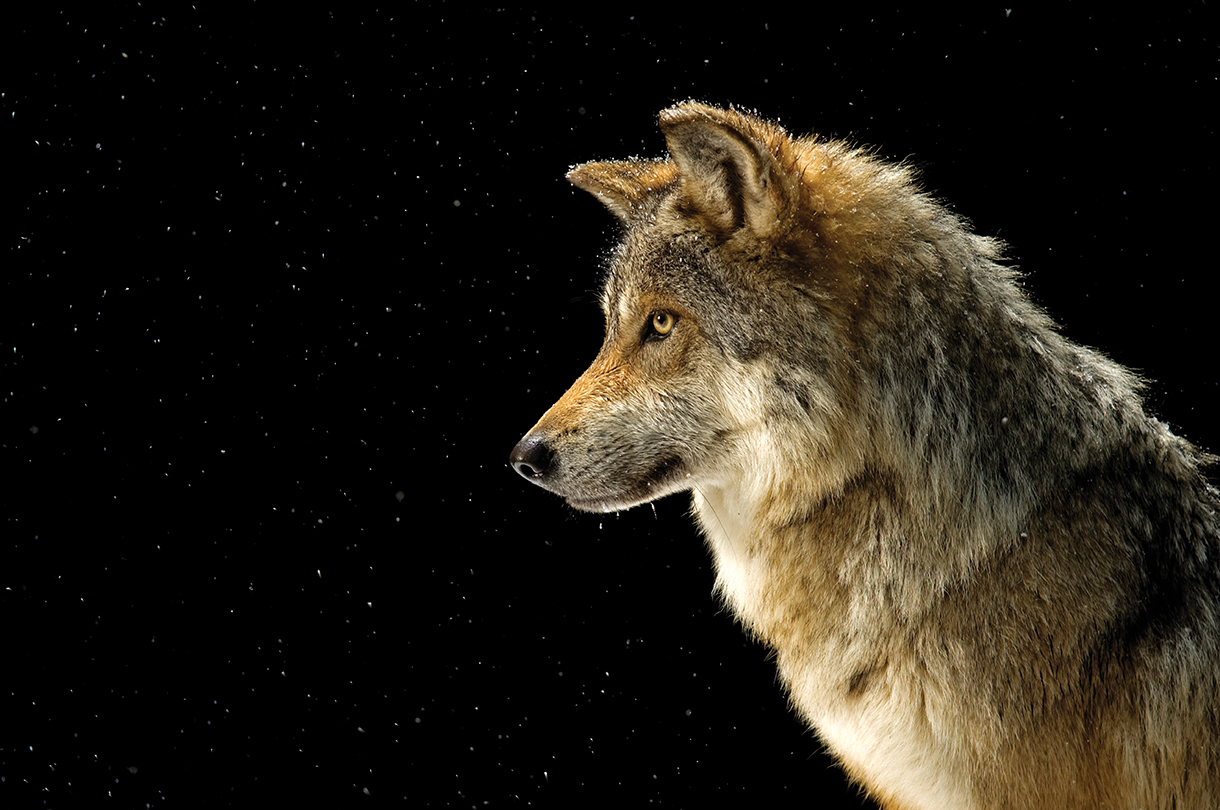
MEXICAN GRAY WOLVES
Status: Endangered (ESA)
Captive breeding programs help rescue the most endangered gray wolf in North America.
El lobo once occupied the height of North American lore, a supernatural entity respected as a warrior symbol and cunning predator in Pre-Columbian Mexico. But the Mexican gray wolf (a subspecies of the gray wolf of more northern latitudes) was extirpated in the wild during the mid-1900s, largely through government-sponsored hunting, trapping, poisoning, and the removal of pups from dens. Once numbering in the thousands, wild wolves were functionally extinct in the United States by the mid-1970s, with just a handful existing in captivity.
In 1976, the US Fish and Wildlife Service listed the species under the Endangered Species Act and collaborated with Mexico to capture all remaining wolves in the wild. Four males and one pregnant female were captured alive in Mexico and used to start a captive breeding program that led the 1998 release of 11 Mexican wolves into recovery areas in Arizona and New Mexico. By 2018, 131 wolves in 32 packs were documented in the wild, while 240 wolves existed in captive breeding. The recolonization of their former historical range had begun—but not without concerns.
“Mexican gray wolves were eradicated because of conflicts with livestock,” says Craig Miller, senior Southwest representative for Defenders of Wildlife. “Their numbers have grown slowly, but their future remains uncertain because of compromised genetics from small populations and human intolerance.”
As advocates for the survival of Mexican gray wolves, Defenders of Wildlife (defenders.org) works side by side with wolf country ranchers and wildlife managers to help reduce conflicts between wolves and livestock. When conflicts do occur, effective management strategies and compensation for rancher losses are saving wolves’ lives. “The partnerships around collaborative work have resulted in improved trust and communication with stakeholders—and unexpected friendships,” says Miller. “We don’t agree on everything, but we do agree on collaborative problem-solving to support long-term solutions allowing people and wildlife to coexist.”
SEE THEM: WolfHorse Outfitters (wolfhorseoutfitters.com) is a Native American guide service specializing in pack horse adventures into the Gila and Aldo Leopold wilderness areas, both strongholds of Mexican gray wolves. Beginning in Silver City, New Mexico, multiday rides journey along the old Apache “Drag the Wolf Trail,” while guides are attentive to the evidence of wolves.
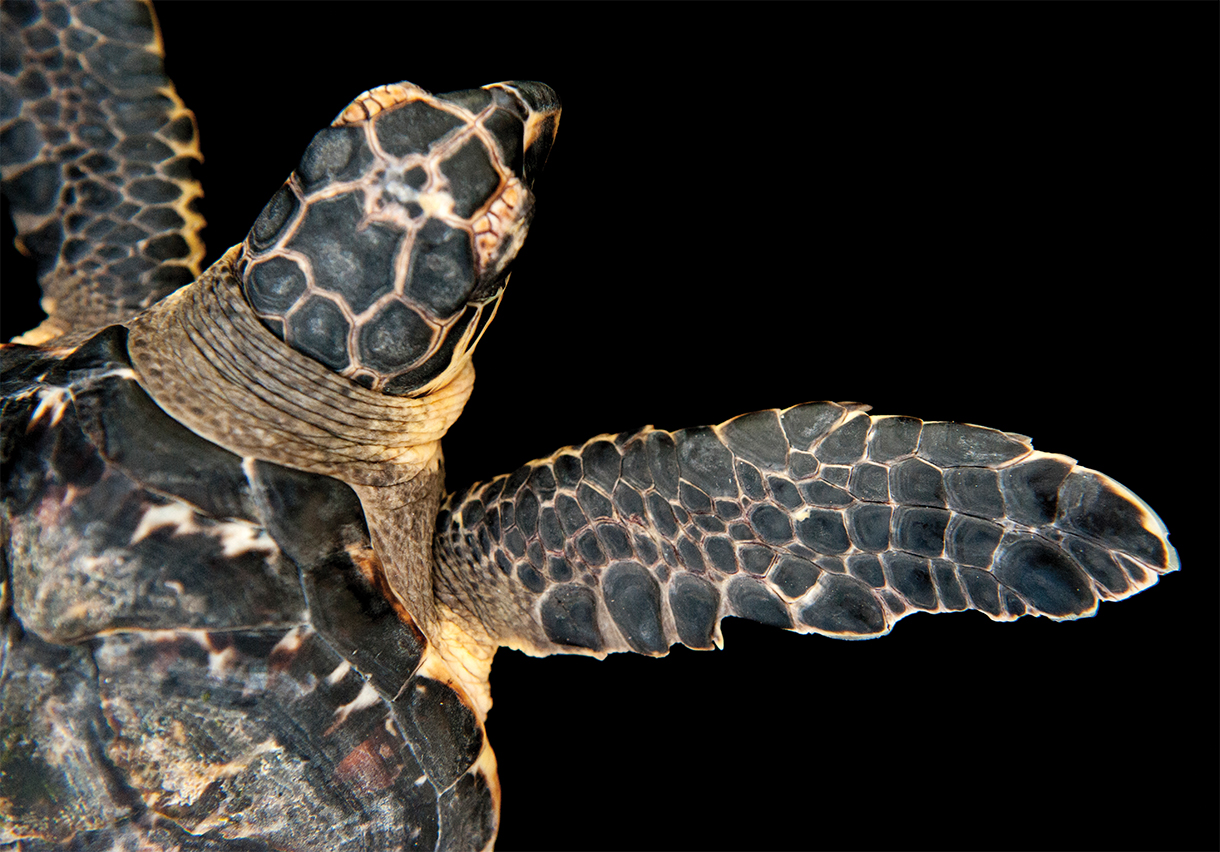
HAWKSBILL TURTLES
Status: Critically Endangered (IUCN)
A survivor since ancient times faces increasing adversity and extinction.
The hawksbill marine turtle is a prime example of extraordinary evolutionary success. Sea turtles belong to the classification order Testudines, whose first specimens date back to about 230 million years. Their remarkable antiquity makes them one of the most primitive groups of reptiles that have survived Earth’s mass extinctions and still inhabit Earth. Not only have hawksbills endured but over millennia have propagated, with worldwide distribution that includes Atlantic and Indo-Pacific subspecies.
But the species’ evolutionary attributes might well be causes of its decline at the hands of humans. With a flattened body shape, protective carapace shell, and flipper-like limbs adapted for swimming in the open ocean, hawksbills are distinguished from other sea turtles by their sharp, curving beak and serrated appearance of the shell perimeter. Also unique to the hawksbill is its shell that changes color depending on water temperature, imbuing a beautiful palette prized by fishermen. It has been the primary source of tortoise shell material used for decorative purposes—a lethal consequence largely responsible for their declining populations.
In the past 100 years, the hawksbill sea turtle has lost 90 percent of its population, 80 percent of which has been lost in the past 10 years, according to the Convention on International Trade in Endangered Species, which outlaws the capture and trade of hawksbill sea turtles and products derived from the species. Precise statistics are difficult to calculate, but the IUCN estimates that there are only five populations worldwide comprising around 8,000 turtles, with only 1,000 females nesting annually. In the global scheme of a species’ survival, those numbers are critically low.
“Hawksbills today exist at population levels so low they no longer can fulfill their ecological role,” says Dr. Karen Bjorndal, distinguished professor and director of the Archie Carr Center for Sea Turtle Research at the University of Florida (accstr.ufl.edu). Hawksbills were killed for the meat and eggs, but the most intensive harvest was for their beautiful tortoiseshell. Additional threats are posed by the loss of coral reefs, their primary habitat.
SEE THEM: Hawksbill turtles make frequent appearances in the clear waters off St. Croix in the US Virgin Islands. To catch the underwater action, N2theBlue Scuba Diving leads divers and snorkelers to beaches, reefs, and fishy grottoes that are known turtle habitats, including Buck Island, where the sea turtles are known to nest.
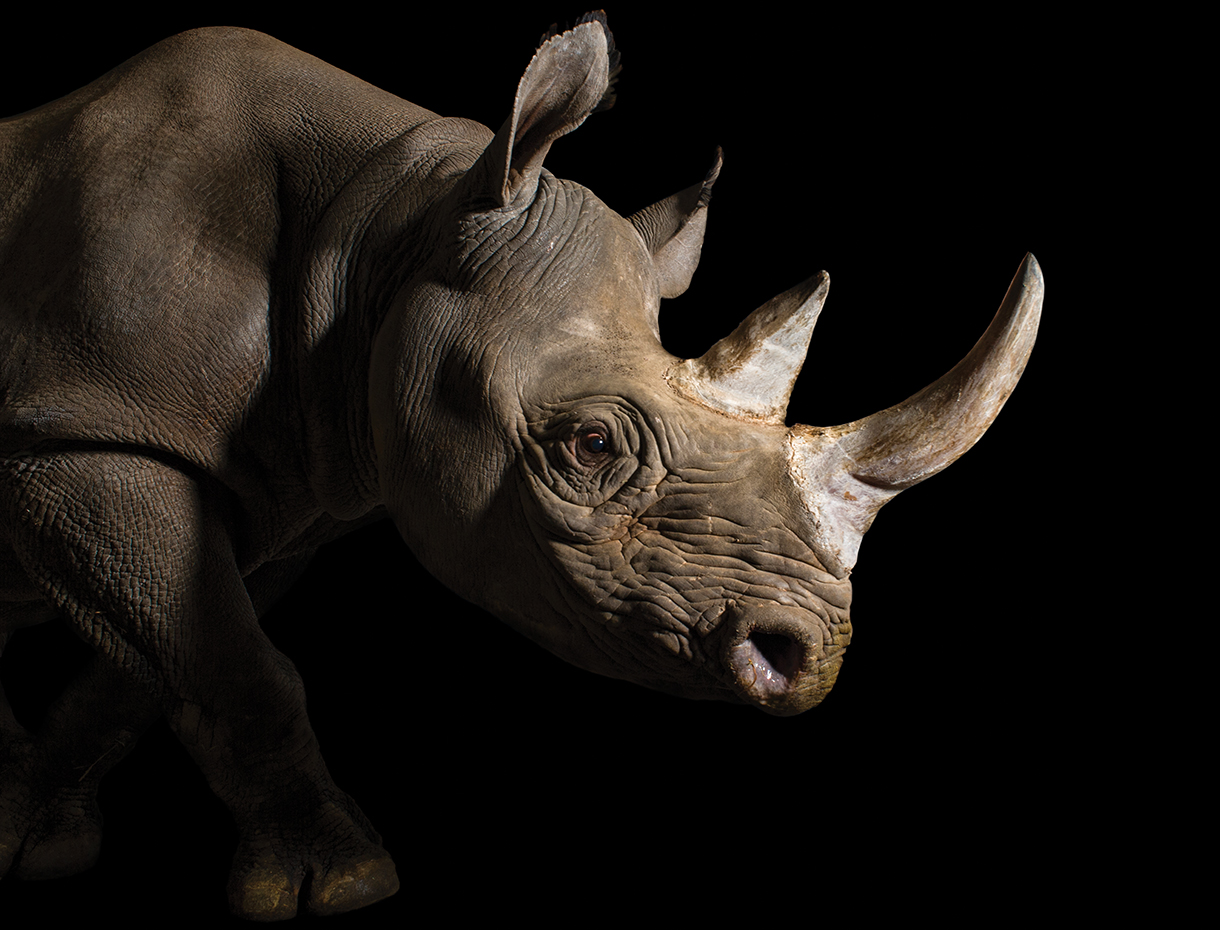
BLACK RHINOS
Status: Critically Endangered (IUCN)
The hook-lipped rhinoceros faces the real threat of extinction within two decades.
Tragically, Africa’s black rhino is perhaps the most emblematic example of near extinction at the hands of humans. Some 60 years ago the black rhino population totaled roughly 100,000, but from 1960 to 1995 numbers declined by a catastrophic 98 percent, plummeting to a record low of 2,300 in 1993. Today, their numbers tally at about 5,500. The net decline, experts say, is traced to two main threats facing the black rhino (and, in fact, all five species of rhinos): habitat loss and poaching.
“The black rhino is facing the threat of extinction during our lifetime,” says Simon Jones, founder and CEO of the Helping Rhinos Organization (helpingrhinos.org), a nonprofit that forges conservation, community, and education initiatives to ensure the long-term survival of the species in its natural habitat. “With its trademark horn, rhinos are one of Africa’s most iconic species. Sadly, it’s the rhino’s majestic armament that is the origin of its demise.”
Black rhinos remain critically endangered because of demand for the rhino horn, valued on the black market as one of the most expensive commodities in the world. The powdered horn is typically used in folk remedies by Asian consumers, particularly in Vietnam and China, and is considered by some to be an aphrodisiac (it’s not). South Africa has been especially hard-hit by poachers; an increase in illegal activity reached an apex in 2014 when 1,215 rhinos were poached there. Although poaching has slowly decreased (594 were poached in South Africa in 2019), the illegal killing of black rhinos continues to drive the species toward extinction. “There needs to be a paradigm shift and education aimed at the root causes of poaching,” says Jones. “If we can help remove the economic incentive and preserve critical habitat, black rhino stand a much better chance of survival as a species.”
SEE THEM: Ol Pejeta Conservancy (olpejetaconservancy.org) has East Africa’s largest population of black rhino (more than 130) and works with Helping Rhinos and other organizations to provide a safe haven for the species. Visitors at its tented camps and lodges have supervised close encounters with some of the guarded animals and can explore remote regions of the 90,000-acre private reserve in Kenya’s Laikipia District.
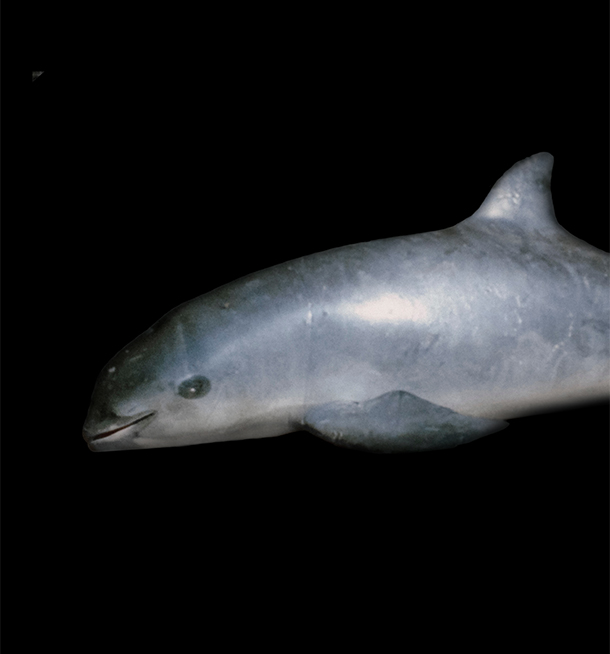
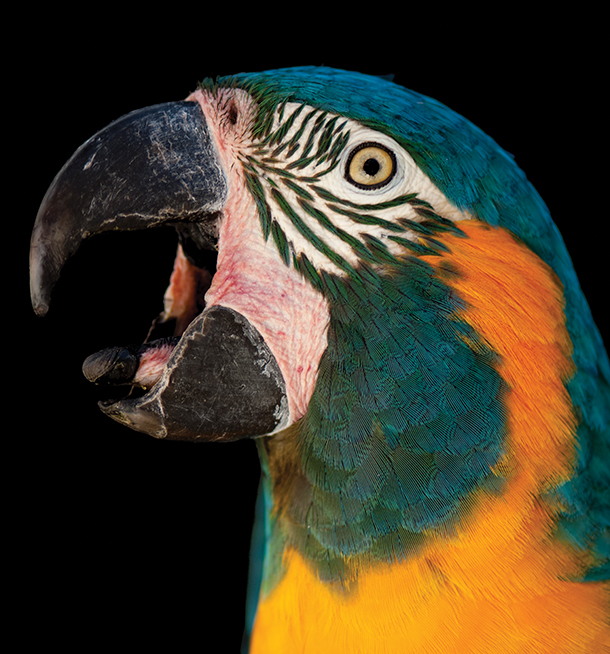
VAQUITA PORPOISES
Status: Critically Endangered (IUCN)
Thought to be in irreversible decline, the world’s rarest sea mammal receives a slight reprieve.
In the Upper Gulf of California, where the Baja Peninsula converges with mainland Mexico, an unexpected discovery this past summer revived hopes for the salvation of the world’s most endangered marine mammal, the endemic vaquita porpoise. During conservation patrols, the crew aboard Sea Shepherd’s M/V Sharpie photographed two vaquitas in August, followed by another four sightings in September. The six vaquitas documented were “adult and appeared to be in good health,” according to the report—a boon for conservationists who estimate that just 19 to 30 individuals exist.
It was a remarkable, though guarded, turn of events for the enigmatic, elusive Mexican porpoise, which World Wildlife Fund predicted could be extinct by 2018. Spanish for “little cow,” the 4.5-foot-long porpoise with distinctive dark circles around its eyes is the smallest in the cetacean’s order, which includes whales and dolphins. When scientists first identified the species in 1950, they soon realized it was on the road to extinction. Vaquitas were regularly drowning in gill nets used to catch shrimp and totoabas, a fish whose swim bladder is prized as a delicacy in China. In 1975, Mexico outlawed totoabas fishing, but illegal fishing persisted, with bycatch deaths of vaquitas being an unintended consequence.
By 2005, numbers of vaquita had plummeted to as low as 200 individuals, and the Mexican government reacted to scientists’ outcries by designating part of the gulf a vaquita refuge. A subsequent effort to protect them in captivity proved a failure after two females showed signs of stress in swim pens, with one eventually dying upon release. The consensus on recovery now is enforcement of fishing-net bans, which has become a primary charge for Sea Shepherd Conservation Society (seashepherd.org).
Through its Operation Milagro, Sea Shepherd has patrolled the Upper Gulf for the past five years to monitor poaching and retrieved 990 fishing nets roughly 120 miles long. Additional efforts include those of activists and undercover agents. “It’s very important to document live vaquitas,” says Captain Paul Watson, Sea Shepherd’s founder and executive director. “Our crews have been working tirelessly to remove the gill-net threat from the vaquita’s path. ”
SEE THEM: With such a critically low population, vaquita porpoise sightings in Mexico’s Sea of Cortez are exceedingly rare and have no tour operators. However, nonprofit Viva Vaquita (vivavaquita.org) conducts periodic boat expeditions to the Upper Gulf to conduct research and document sightings, and often accepts inquiring participants.
BLUE-THROATED MACAWS
Status: Critically Endangered (IUCN)
Rescued from the brink of extinction, Bolivia’s “Blue Beard” macaw maintains a precarious existence.
The blue-throated macaw is perhaps the rarest of birds, a magnificent species so obscure that scientists thought it had vanished in the wild until its rediscovery in north-central Bolivia in 1992. Found only in small nesting colonies, Ara glaucogularis is not a forest-dweller like other macaws. The highly adapted species is specialized only to the islas (islands) of palm trees that poke above the level grassland plains of Beni savannas that flood annually. With its dramatic plumage and limited nesting habitat for reproduction, the species’ fate seemed preordained.
“They were nearly extinct due to intensive poaching for the international pet market,” explains Rodrigo Soria, executive director of Asociación Armonía (armoniabolivia.org), a Bolivian nonprofit supported by the American Bird Conservancy.
“The threat was reduced considerably by the early 2000s, thanks to Armonia’s education campaign, conservation work, and political decisions to protect the bird. Now the most relevant pressure is the extensive, unsustainable management of the Beni savannas for cattle ranching.”
Known by locals as barba azul, or “blue beard,” the rare macaw is known for its distinctive blue patch beneath its bill and was sought after during the illegal parrot trade craze in the ’80s. While the unique birds were thought to be extinct in the wild, somehow they continued to arrive in foreign markets, their origins unknown. Bolivian conservationists turned to old trappers in the bird’s historic habitat, who helped map out islands of palm trees where a population of about 50 blue-throated macaws managed to survive.
Today, the species’ population is on a slow upswing. Recovery efforts last year by Asociación Armonía received a tremendous boost with the establishment of the Laney Rickman Blue-throated Macaw Reserve in the Beni savanna. Together with the existing Barba Azul Nature Reserve, 11,680 acres of protected land are now dedicated to the species. Within the past two years, 81 blue-throated macaw chicks have fledged from artificial nest boxes, making a significant contribution to the species’ total population of about 450 birds.
SEE THEM: Established by nonprofit Asociación Armonía, the Barba Azul Nature Reserve lies in Bolivia’s remote Beni savanna region and protects habitat for endemic blue-throated macaws. It offers visitor cabins and includes meals, boat excursions, horseback rides, and full-reserve access (popular with bird watchers and photographers).
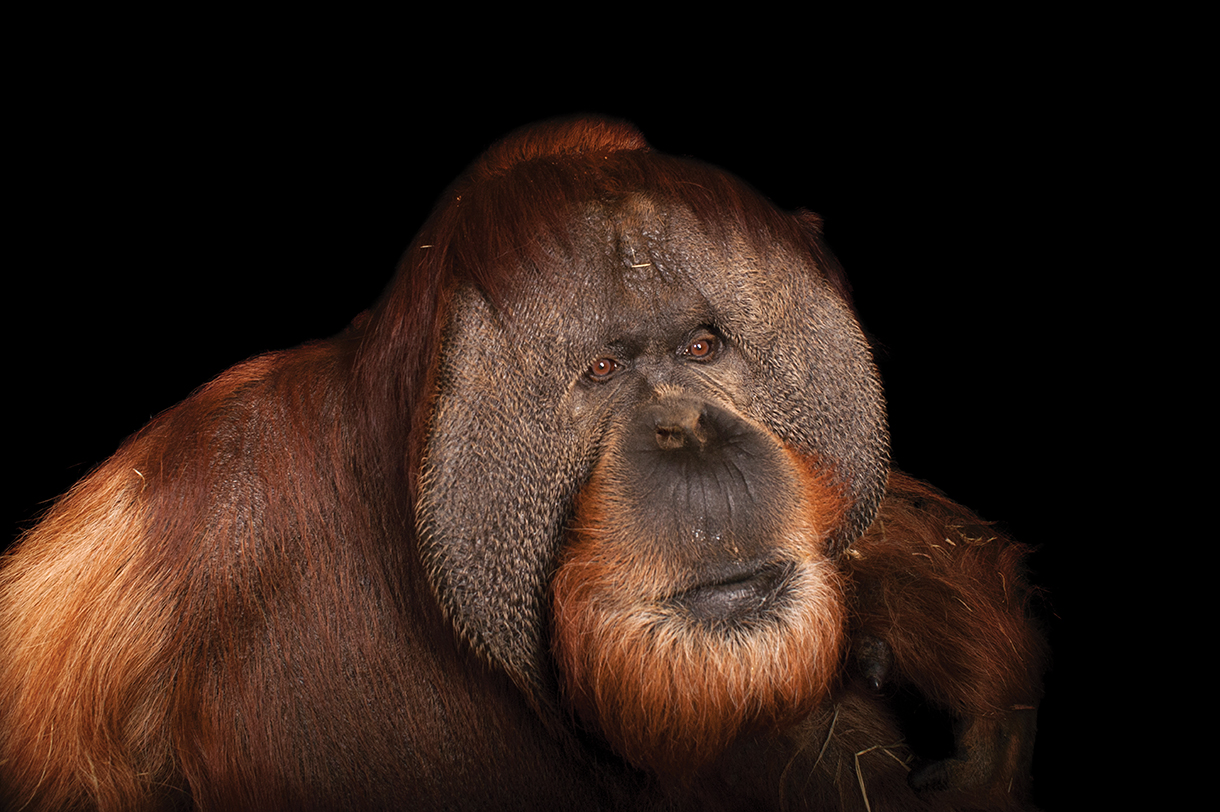
ORANGUTANS
Status: Critically Endangered (IUCN)
One of our closest relatives symbolizes the right for survival in the face of “progress.”
The data is startling: Approximately 80 percent of the world’s orangutan population has been lost in the past 75 years. Once widespread through the forests of Asia, orangutans are now found only on two Indonesian islands, Sumatra and Borneo. One hundred years ago there were thought to be 315,000 orangutans in the wild. Conservation organizations now say there are less than 14,600 left in Sumatra and less than 54,000 in Borneo.
“As Indonesian forests are being increasingly ravaged by industrial pulp and paper timber estates, palm oil plantations, and human population growth, conflicts between people and native wildlife have escalated,” explains Orangutan Foundation International (orangutan.org) President Dr. Biruté Mary Galdikas, recognized as the world’s foremost authority on orangutans.
As a result of poaching and habitat destruction, viable orangutan populations are on the edge of extinction and could be gone within the next 50 years (outside of national parks and reserves). Galdikas says, “The destruction of pristine primary rainforests has led to the devastation of wild orangutan populations that face losses due to poaching, starvation, and being stolen and trafficked into the illegal pet trade.”
Deforestation poses the largest danger to orangutans, an arboreal species that spends most of its life and finds 95 percent of its food in trees. Fires used to clear lands for agriculture decimate habitats and directly kill orangutans. Those that manage to escape are often killed by plantation workers as agricultural pests. Disturbingly, hunting for meat continues to threaten the species as well. Mothers are often killed for their babies, which are sold on the black market for pets. Infants fortunate enough to be rescued are rehabilitated by volunteers for eventual reintroduction into the wild.
The largest orangutan population is in southern Borneo’s Tanjung Puting National Park, where 1,174 square miles of low-lying swampy habitat sits on a peninsula that juts into the Java Sea. This park is where Galdikas established Camp Leakey, named after her mentor, Dr. Louis Leakey, the famed paleoanthropologist known for his work documenting the evolution of humans. The camp’s primary function is to provide a base for scientists, staff, students, and park rangers to study orangutans. But the sanctuary continues to be under assault. Since 2016, large numbers of poachers and traffickers have returned, targeting not only orangutans but songbirds, sun bears, and other primates.
SEE THEM: Adventure Indonesia (adventureindonesia.com) ferries guests on multiday river safaris in Tanjung Puting National Park to witness the world’s most observable orangutans. Located in Kalimantan Tengah (central Borneo), Indonesia, the park is the site of renowned Camp Leakey, where guests accompany rangers to see older orangutans reintroduced into the rainforest.
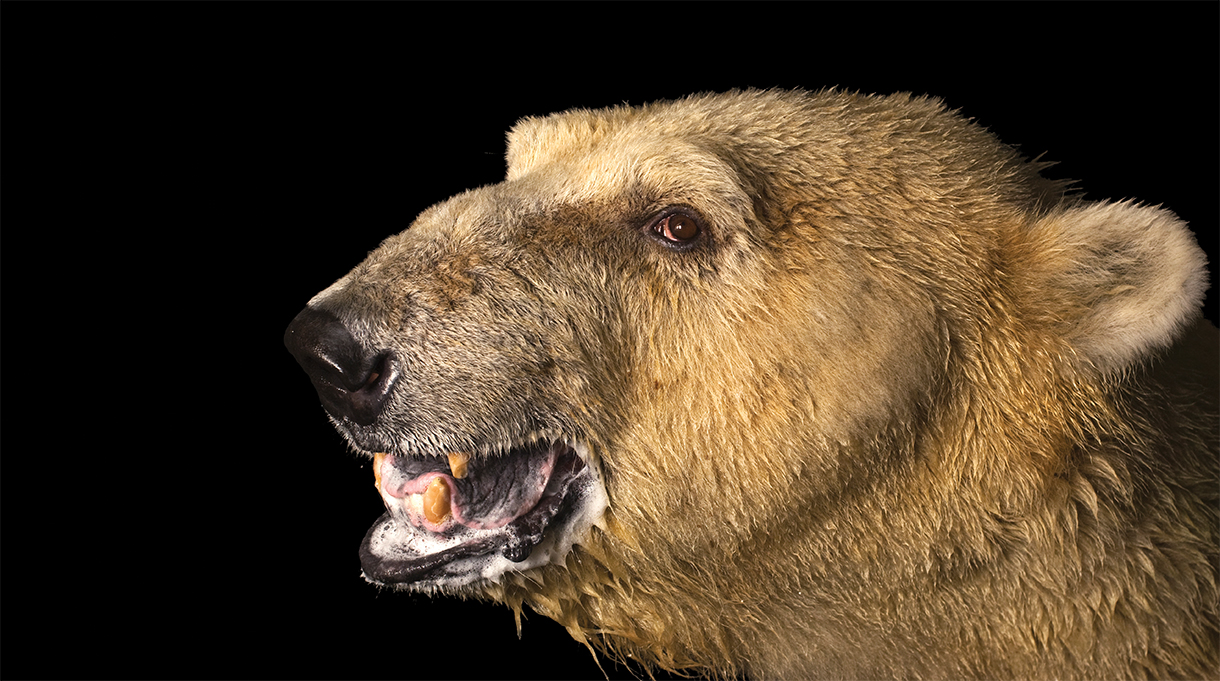
POLAR BEARS
Status: Vulnerable (IUCN)
The Arctic’s apex predator is on thin ice (and the outlook for survival is dreadful).
Perhaps no other endangered species in the Northern Hemisphere is as synonymous with the effects of global climate change as the polar bear. Its plight is well documented, a direct consequence of rising temperatures and loss of Arctic sea ice, which they use for hunting, mating, migrating, and, in some places, denning. As the Arctic warms, polar bears also become increasingly vulnerable to starvation. The species obtains the vast majority of its energy intake by hunting seals, and the loss of their habitat in the spring (their main hunting season) is particularly devastating. The bears use this time to put on massive fat stores that carry them through the summer when sea ice isn’t available. Polar bears lose about two pounds per day when they’re not feeding, and the longer they can hunt into the summer, the better their chances for survival before the ice returns.
Andrew Derocher, Ph.D., a professor at the Department of Biological Sciences at the University of Alberta and an advisor to the nonprofit conservation organization Polar Bears International (polarbearsinternational.org), says climate data and population studies create a worrisome forecast for the species’ survival. “We’re working to understand how little sea ice in a year bears can survive. Our estimates show that if conditions are ice-free for more than 180 days a year, populations will start to decline due to low survival and reduced reproduction. Above 210 ice-free days, survival and reproduction will be so low that a population will head into extirpation,” he says.
“Our best analyses suggest that polar bears will persist to the year 2100 in the high Arctic of Canada and in northern Greenland,” explains Derocher. “There are 19 populations of polar bears across the Arctic and 19 different scenarios playing out at different rates. Some populations are losing sea ice at a rate of 30 days per decade, while others are only losing 6–12 days per decade. We have clear indications of population declines in 3 of the 19 populations.”
SEE THEM: On the shores of Canada’s Hudson Bay, polar bears congregate near the town of Churchill, where Lazy Bear Expeditions (lazybearlodge.com) hosts excursions from its spacious lodge to see polar bears, which are one of North America’s largest predators. Depending on the season, lodge guests have the chance to see bears by boat, shuttle vehicle, or in the custom Arctic Crawler tundra vehicles that facilitate intimate encounters.




